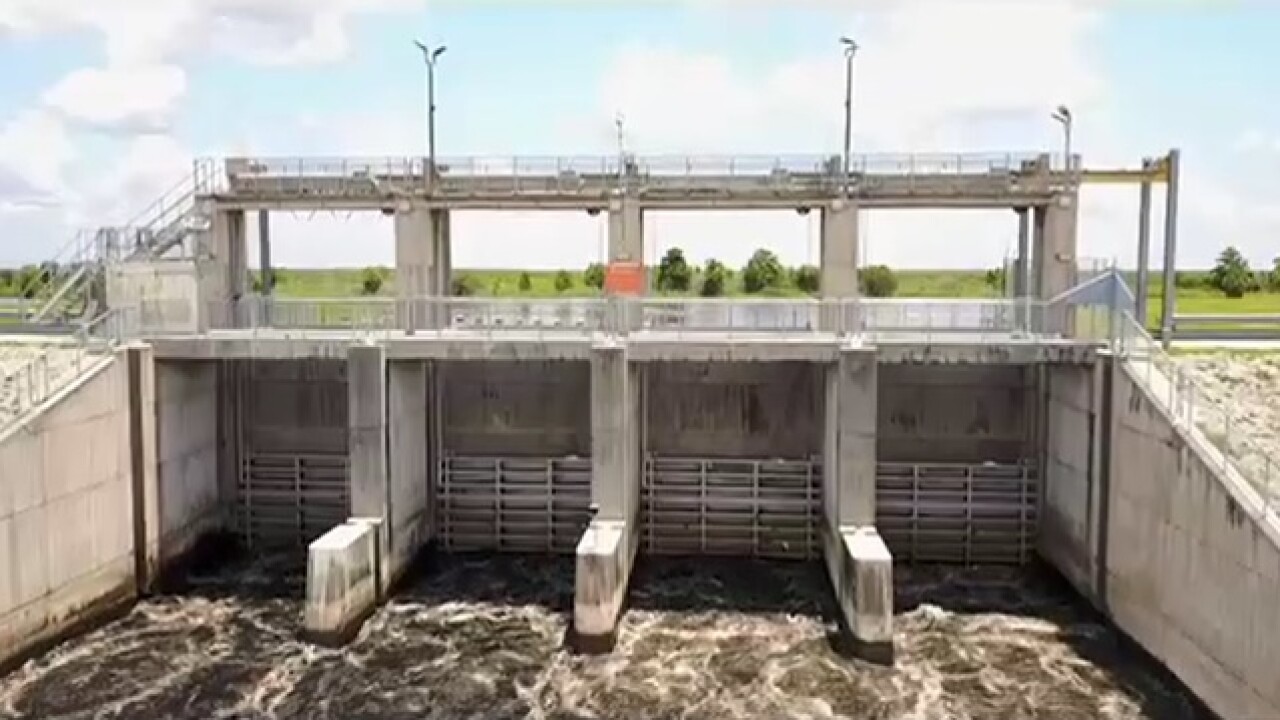JACKSONVILLE, Fla. — The U.S. Army Corps of Engineers (USACE) Jacksonville District will increase Lake Okeechobee releases at the W.P. Franklin Lock and Dam (S-79) from the current 1,000 cubic feet per second (cfs) to 2,000 cfs beginning April 24.
RELATED: 10,000 pounds of dead fish removed from Charlotte County in two days
The increase is intended to help restart the lake recession following heavy rains that caused the lake to rise by 0.02 feet in the past seven days. No lake releases are planned from the St. Lucie Lock and Dam (S-80). Local runoff in either estuary may cause higher flows than the targets as operators release water to manage canal levels. Today’s lake elevation is 14.25 feet, which is 0.03 feet higher than last week and 2.85 feet higher than last year on this date.
With the wet season around the corner it is ideal to lower water levels a bit more. At this time, USACE will increase flows to the west but not the east for the following reasons:
- The 2,000 cfs target at S-79 is still within the ecological envelope recommended by the RECOVER (REestoration COordination and VERification) group for dry season flows to the Caloosahatchee and within the regulation schedule guidance.
- An April 19 sample from the lakeside of the Port Mayaca Lock and Dam (S-308) showed visible algae and Microcystin levels of 120 parts per billion, significantly higher than the Environmental Protection Agency recommendation for recreation of 8 ppb.
RELATED: Governor Ron DeSantis announces major milestone to advance EAA Reservoir project
“We are very concerned about the level of the lake as we near the beginning of the rainy season, and the long-range weather forecasts are painting a potentially rainy seasonal outlook,” said Col. Andrew Kelly, Jacksonville District Commander. “While we need to get water out of the lake to prepare for the upcoming tropical weather season, May is one of the most challenging times to predict and may require us to adjust operations regularly as conditions change.”
Current satellite photos of the lake indicate a low likelihood of large harmful algal blooms, but as the Florida Department of Environmental Protection test show, even small patches of algae can develop Microcystin.
USACE will continue to post warning signs at its structures and facilities as directed by county health departments, and will continue to work with its partners at FDEP to monitor algal blooms for signs of Microcystin and with our partners at the SFWMD to find alternatives to releasing water when HABs are present.



